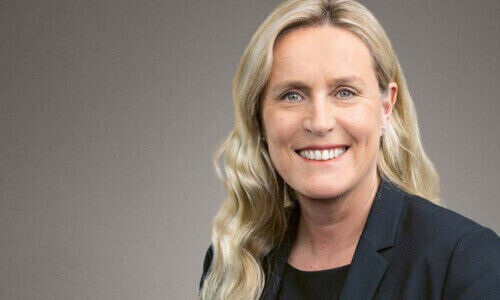Press «play» to listen to this content
1x
Playback Speed- 0.5
- 0.6
- 0.7
- 0.8
- 0.9
- 1
- 1.1
- 1.2
- 1.3
- 1.5
- 2
credit suisse failed to learn gam's supply chain lesson. the network of relations between asset manager gam and credit suisse indicates that the swiss bank entered into its disastrous relationship with sanjeev gupta and lex greensill with its eyes wide open. in 2018, gam shocked its clients by suspending tim haywood, the portfolio manager of its absolute-return bond fund range. as a result, credit suisse, one of the biggest distributors of gam’s funds, put the brakes on the relationship immediately. yet less than three years later, the swiss bank finds itself mired in crisis due to the collapse greensill and to sanjeev gupta, one of the u.k. supply chain financier’s biggest clients – precisely the issues which snagged gam. gupta’s australian steelworks is the largest outstanding debtor to the credit suisse-greensill funds – $1.2 billion. sway of david solo. so how did credit suisse go from diligent and cautious client of gam to all-out gorging on greensill and gupta, including taking on some assets that had caused trouble, as finews.com reported in march? david solo’s influence had something to do with it: the former gam ceo was instrumental in introducing greensill and credit suisse, as finews.asia previously reported. gam had set up supply chain funds with greensill in 2015, but ironically the products never genuinely took off, according to two people familiar with the matter. nor were gam's sales team keen to promote them: fees were small the product complex, and the target audience – primarily corporate treasurers with surplus cash – outside the asset manager's wheelhouse. wealthy opportunity. by contrast, credit suisse represented a vastly different type of animal, as the «financial times » (behind paywall) reported on tuesday: specifically, the swiss bank's top asset manager, eric varvel, spotted an opportunity to sell credit suisse's wealthy private banking clients (which eventually made for the largest buyers of the greensill funds, as finews.asia reported reported ). neither company did well with its supply chain entanglements: gam is still trying to stanch redemptions sparked by its july 2018 suspension of haywood, who had bought many greensill bonds. it didn’t entirely sever ties to gupta until six months ago. riding on relationship. back in 2018, the asset manager had a lot riding on the relationship: it had lost the more or less captive channel of julius baer and ubs some years before, and credit suisse was one of its biggest distribution channels. after haywood, swiss bank then began a months-long process of painstakingly reevaluating each gam product, fund-for-fund. gam’s first priority was to wind down haywood’s absolute-return bond funds, or arbf. getting back into credit suisse’s good graces for distribution ran a close second at the time. desperate to distribute to credit suisse’s clients again, gam sought what onlookers termed an intensive interaction with the bank from august 2018 until mid-2019. management attention. as a result, the bank enjoyed an unusual level of transparency, detail, and attention at gam several people familiar with the relationship told finews.com. if top executives such as finance chief richard mcnamara were in zurich, they would make a point of visiting credit suisse to woo in person. neither credit suisse, which eventually permitted gam products back in, nor gam commented. gupta’s acquisition spree runs like a thread through the whole affair: gam financed his 2017 purchase of liberty primary metals steelworks in australia, a person familiar with the matter told finews.com. the deal was funded with a £600 million ($850 million) «little red box» securitization scheme reported by the «financial times » (behind paywall) nearly two years ago. the financing is now subject to a british fraud investigation. fund-for-fund review. the scheme was refinanced when gam was shutting haywood’s funds mid-2019 – by tapping 2.2 billion euros ($2.68 billion) in financing for arcelormittal’s eastern european steel assets (deal price: 740 million euros), the person said. the bank reviewed gam fund-for-fund during the frenetic 12 months that the asset manager was winding down its absolute-return business, or arbf, which was heavily stocked with greensill notes, according to a second person familiar with the matter. so why didn’t credit suisse spot the concentration of greensill at gam? looking in wrong room? since gam would no longer be selling the arbf products any longer, it isn’t clear whether credit suisse took a look at them. in fact, credit suisse had stopped distributing haywood's funds in 2015, over performance, according to a person familiar with the relationship. that notwithstanding, the borders between the two were somewhat porous as is common in swiss finance. for example, several fixed income managers headed for credit suisse following a cull at gam in december 2018, along with at least one product specialist. both firms also failed stunningly on relying on greensill’s expertise in actually managing the supply chain assets. credit suisse’s fund reports literally emphasize the bank doesn’t manage the funds. crucially, the bank appears to have largely delegated to greensill handling credit insurance. tragically the bank may have used its fulsome access at gam in 2018 and 2019 to poke around in the wrong room. powerful backers. the bank also had little incentive to question the events around gam, where a regulatory investigation continues. when credit suisse first encountered greensill, the prospect of selling an exciting low-risk fixed income product was huge. later, the u.k. firm had attracted other powerful backers including softbank. as the bank works its way through the regulatory and legal carnage, the key question for countless lawyers is whether credit suisse is culpable. was the swiss bank naïve and trusting – or even wilfully blind?
Credit Suisse Failed to Learn GAM's Supply Chain Lesson
The network of relations between asset manager GAM and Credit Suisse indicates that the Swiss bank entered into its disastrous relationship with Sanjeev Gupta and Lex Greensill with its eyes wide open.
In 2018, GAM shocked its clients by suspending Tim Haywood, the portfolio manager of its absolute-return bond fund range. As a result, Credit Suisse, one of the biggest distributors of GAM’s funds, put the brakes on the relationship immediately.
Yet less than three years later, the Swiss bank finds itself mired in crisis due to the collapse Greensill and to Sanjeev Gupta, one of the U.K. supply chain financier’s biggest clients – precisely the issues which snagged GAM. Gupta’s Australian steelworks is the largest outstanding debtor to the Credit Suisse-Greensill funds – $1.2 billion.
Sway Of David Solo
So how did Credit Suisse go from diligent and cautious client of GAM to all-out gorging on Greensill and Gupta, including taking on some assets that had caused trouble, as finews.com reported in March? David Solo’s influence had something to do with it: the former GAM CEO was instrumental in introducing Greensill and Credit Suisse, as finews.asia previously reported.
GAM had set up supply chain funds with Greensill in 2015, but ironically the products never genuinely took off, according to two people familiar with the matter. Nor were GAM's sales team keen to promote them: fees were small the product complex, and the target audience – primarily corporate treasurers with surplus cash – outside the asset manager's wheelhouse.
Wealthy Opportunity
By contrast, Credit Suisse represented a vastly different type of animal, as the «Financial Times» (behind paywall) reported on Tuesday: specifically, the Swiss bank's top asset manager, Eric Varvel, spotted an opportunity to sell Credit Suisse's wealthy private banking clients (which eventually made for the largest buyers of the Greensill funds, as finews.asia reported reported).
Neither company did well with its supply chain entanglements: GAM is still trying to stanch redemptions sparked by its July 2018 suspension of Haywood, who had bought many Greensill bonds. It didn’t entirely sever ties to Gupta until six months ago.
Riding On Relationship
Back in 2018, the asset manager had a lot riding on the relationship: it had lost the more or less captive channel of Julius Baer and UBS some years before, and Credit Suisse was one of its biggest distribution channels. After Haywood, Swiss bank then began a months-long process of painstakingly reevaluating each GAM product, fund-for-fund.
GAM’s first priority was to wind down Haywood’s absolute-return bond funds, or ARBF. Getting back into Credit Suisse’s good graces for distribution ran a close second at the time. Desperate to distribute to Credit Suisse’s clients again, GAM sought what onlookers termed an intensive interaction with the bank from August 2018 until mid-2019.
Management Attention
As a result, the bank enjoyed an unusual level of transparency, detail, and attention at GAM several people familiar with the relationship told finews.com. If top executives such as finance chief Richard McNamara were in Zurich, they would make a point of visiting Credit Suisse to woo in person. Neither Credit Suisse, which eventually permitted GAM products back in, nor GAM commented.
Gupta’s acquisition spree runs like a thread through the whole affair: GAM financed his 2017 purchase of Liberty Primary Metals steelworks in Australia, a person familiar with the matter told finews.com. The deal was funded with a £600 million ($850 million) «little red box» securitization scheme reported by the «Financial Times» (behind paywall) nearly two years ago. The financing is now subject to a British fraud investigation.
Fund-For-Fund Review
The scheme was refinanced when GAM was shutting Haywood’s funds mid-2019 – by tapping 2.2 billion euros ($2.68 billion) in financing for ArcelorMittal’s Eastern European steel assets (deal price: 740 million euros), the person said.
The bank reviewed GAM fund-for-fund during the frenetic 12 months that the asset manager was winding down its absolute-return business, or ARBF, which was heavily stocked with Greensill notes, according to a second person familiar with the matter. So why didn’t Credit Suisse spot the concentration of Greensill at GAM?
Looking In Wrong Room?
Since GAM would no longer be selling the ARBF products any longer, it isn’t clear whether Credit Suisse took a look at them. In fact, Credit Suisse had stopped distributing Haywood's funds in 2015, over performance, according to a person familiar with the relationship.
That notwithstanding, the borders between the two were somewhat porous as is common in Swiss finance. For example, several fixed income managers headed for Credit Suisse following a cull at GAM in December 2018, along with at least one product specialist. Both firms also failed stunningly on relying on Greensill’s expertise in actually managing the supply chain assets.
Credit Suisse’s fund reports literally emphasize the bank doesn’t manage the funds. Crucially, the bank appears to have largely delegated to Greensill handling credit insurance. Tragically the bank may have used its fulsome access at GAM in 2018 and 2019 to poke around in the wrong room.
Powerful Backers
The bank also had little incentive to question the events around GAM, where a regulatory investigation continues. When Credit Suisse first encountered Greensill, the prospect of selling an exciting low-risk fixed income product was huge. Later, the U.K. firm had attracted other powerful backers including Softbank.
As the bank works its way through the regulatory and legal carnage, the key question for countless lawyers is whether Credit Suisse is culpable. Was the Swiss bank naïve and trusting – or even wilfully blind?





























